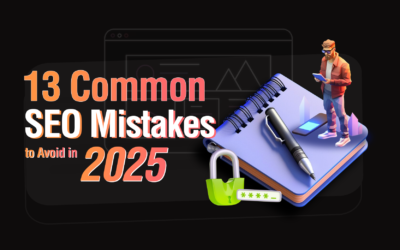In today’s fast-evolving digital economy, platform specialization—mastering a single tool, software, or ecosystem—has become both a strength and a constraint. Businesses and professionals who once found great success by focusing on platforms like Shopify, Salesforce, WordPress, or HubSpot may now find that deep expertise in one ecosystem can limit growth, innovation, and market adaptability.
As digital landscapes diversify and client demands evolve, pivoting out of platform specialization is not only strategic—it’s necessary for long-term relevance and competitive advantage. This article explores how businesses, entrepreneurs, and consulting agencies can effectively make that shift, without losing their core strengths.
The Risks of Over-Specializing in One Platform
Platform specialization initially provides a competitive edge. You get known for doing one thing exceptionally well. But as markets shift and platforms change their pricing, capabilities, or policies, over-reliance can become a liability. Some common risks include:
-
Platform Dependency: Sudden changes in a platform’s roadmap or licensing can directly impact your service model or revenue.
-
Stalled Innovation: Limiting your stack may restrict the ability to offer more comprehensive, forward-thinking solutions.
-
Reduced Client Flexibility: Clients often want tailor-fit solutions—not one-size-fits-all based on a single tool.
-
Scaling Challenges: Expanding your services or entering new markets can become difficult when you’re seen as “just a [Platform X] shop.”
The pivot doesn’t mean abandoning what you’ve built; it means expanding the lens of how you deliver value—beyond the platform.
1. Start with a Strategic Self-Assessment
Before pivoting, evaluate your current state:
-
What problems are you solving best right now?
-
Are those problems tied to a single tool, or could they be addressed in broader ways?
-
What’s your team’s skill depth beyond the platform?
-
What industries or business functions are you uniquely positioned to serve?
Use this assessment to identify adjacent areas where your expertise can be translated into new offerings. This will form the foundation of your pivot strategy.
2. Reframe Around Problems, Not Platforms
A fundamental mindset shift is to move from platform-centric thinking to problem-centric positioning. Instead of saying, “We build Shopify stores,” reframe it as, “We help e-commerce businesses scale their digital operations.”
This pivot:
-
Allows you to serve a broader client base
-
Enables you to introduce new tools when needed
-
Positions your brand as a solution provider, not just an implementer
Start crafting messaging and offers that reflect this expanded focus.
3. Diversify Your Technology Stack
One of the clearest ways to pivot is by introducing additional tools and platforms into your service offerings. This doesn’t mean becoming a generalist—it means choosing complementary technologies that align with your clients’ needs.
For example:
-
A WordPress agency might explore Headless CMS or Jamstack architectures
-
A Salesforce consultant may branch into integrations with data analytics platforms like Tableau or Snowflake
-
A HubSpot specialist could extend services into CRM migration and process automation using Make or Zapier
The goal is to offer Digital Transformation for Small Business clients that’s flexible and platform-agnostic—without overwhelming your delivery team.
4. Upskill Your Team Intentionally
The transition will fall flat if your team isn’t equipped to deliver new solutions. Invest in intentional upskilling through:
-
Certifications (AWS, Azure, Google Cloud, etc.)
-
Cross-platform training (low-code platforms, API integrations, DevOps tools)
-
Real-world internal projects to gain hands-on experience
The Think Digital PH Team, for instance, incorporates continuous learning as part of its Digital Transformation Solutions, ensuring team members evolve with industry demands and are prepared to deliver high-impact solutions beyond just one tech stack.
5. Evolve Your Branding and Messaging
Your current brand may reflect your old specialization—time to recalibrate. Update your:
-
Website copy
-
Taglines and elevator pitch
-
Case studies and portfolio
-
Social media bios and content strategy
Focus on outcome-based messaging. Instead of “Certified Shopify Partner,” go for something like “Helping small businesses thrive through scalable digital commerce solutions.”
Branding that reflects versatility builds trust and opens doors to larger, more strategic engagements.
6. Develop New Offers with Transitional Appeal
You don’t need to go from 100% Platform X to 0% overnight. Create hybrid offerings that allow existing and new clients to engage with your evolving expertise.
For example:
-
“Custom Integrations for Shopify and Beyond”
-
“Marketing Automation that Works—on HubSpot, Mailchimp, or Klaviyo”
-
“CRM Audits and Migration Support, No Matter the Platform”
This allows for a gradual shift without alienating your existing base—and gives your team a chance to build confidence.
7. Partner and Collaborate
You don’t have to do everything in-house immediately. Build partnerships with other specialists or firms offering adjacent capabilities. Co-deliver projects, share knowledge, and expand your reach without overextending your team.
This is also a great way to pilot new services before fully integrating them into your core offering.
8. Use Client Feedback as a Compass
Clients often signal what they need long before you realize it. If you’re getting questions like:
-
“Can you help us with systems integration?”
-
“Do you offer analytics or reporting support?”
-
“Can we work with you even if we’re not on [Platform X]?”
…that’s a sign you’re ready to broaden your offering.
Conduct regular client interviews, run feedback surveys, and listen during sales calls. Let real demand guide your evolution.
Pivoting as a Growth Strategy
Pivoting out of platform specialization isn’t about abandoning your roots—it’s about leveraging your expertise in new, high-value ways. The digital ecosystem is moving fast. Businesses that evolve to meet cross-platform demands will be the ones that survive—and thrive.
For consulting agencies, entrepreneurs, and businesses aiming to navigate this transformation, embracing a broader, more strategic approach to digital delivery is essential. Whether you’re extending your tech stack or reimagining your positioning, pivoting is a powerful growth strategy.
And if you’re looking for guidance on how to future-proof your business through smart, scalable solutions, the Think Digital PH Team offers Digital Transformation Solutions designed to help small businesses break out of platform silos and achieve long-term digital agility. Talk to us by scheduling a 100% FREE Strategy Session today, by clicking here.







